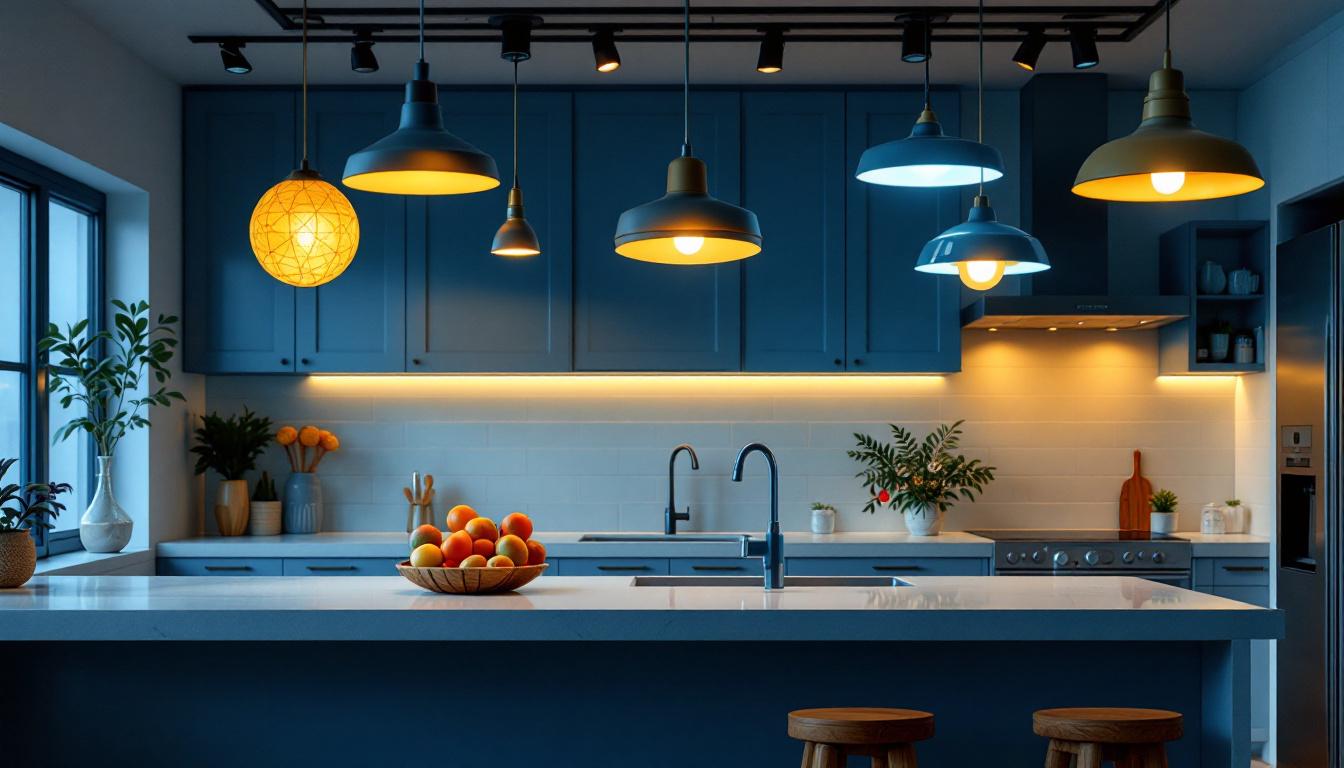
Lighting contractors frequently encounter projects requiring efficient, durable, and cost-effective lighting solutions. Among the most common fixtures in commercial and industrial spaces are linear fluorescent tubes, typically 4 feet in length. With the ongoing shift towards energy-efficient technologies, 4 foot LED replacement bulbs have become a staple in the contractor’s toolkit.
These LED replacements offer significant advantages over traditional fluorescent tubes, including reduced energy consumption, longer lifespan, and better light quality. For contractors, understanding the nuances of these products is essential to recommending the right solutions and ensuring client satisfaction.
LED technology has revolutionized lighting by providing up to 50-70% energy savings compared to fluorescent tubes. Additionally, LEDs contain no mercury, making them safer for the environment and easier to dispose of. Their instant-on capability and superior dimming options also enhance user experience, which is a critical selling point for clients.
From a contractor’s perspective, these bulbs reduce maintenance calls due to their extended operational life, often exceeding 50,000 hours. This longevity translates into fewer replacements and less downtime for facilities, a major benefit in commercial and industrial environments.
Moreover, the versatility of 4 foot LED replacement bulbs allows them to be used in a variety of settings, from warehouses and retail spaces to offices and educational institutions. Their ability to deliver consistent, high-quality light can significantly impact productivity and employee morale. In environments where visual clarity is paramount, such as design studios or laboratories, the superior color rendering index (CRI) of LED lights ensures that colors appear more vibrant and true to life, which is essential for tasks requiring precision.
Furthermore, many modern LED replacements come equipped with smart technology features, enabling remote control and automation. This integration allows facilities to optimize their lighting based on occupancy and natural light levels, further enhancing energy savings and user comfort. As businesses increasingly prioritize sustainability and operational efficiency, the demand for such intelligent lighting solutions is expected to grow, making it imperative for contractors to stay informed about the latest advancements in LED technology.
Choosing the right LED replacement bulb involves more than just matching the size. Several technical specifications impact performance, compatibility, and overall value. Contractors must be well-versed in these to make informed recommendations.
One of the first considerations is whether the LED replacement bulb is compatible with the existing fixture and ballast. Some LED tubes are designed to work with the existing fluorescent ballast (plug-and-play type), while others require ballast bypass or direct wiring to the line voltage.
Understanding the type of installation can save time and money. For instance, ballast-compatible LEDs simplify installation but may have reduced lifespan if the ballast fails. Ballast-bypass LEDs eliminate ballast maintenance but require rewiring, which can increase labor costs. It’s also essential to consider the fixture type—whether it’s a troffer, surface mount, or pendant—as this can influence the choice of bulb and installation method. Ensuring compatibility not only optimizes performance but also enhances safety by preventing electrical issues.
Brightness is measured in lumens, and contractors should select bulbs that provide adequate illumination for the space. A typical 4 foot fluorescent tube emits around 2,500 to 3,000 lumens. LED replacements should match or exceed this to maintain or improve lighting quality.
Choosing the right brightness is crucial for applications such as offices, warehouses, or retail spaces, where proper illumination affects productivity and safety. Additionally, it’s important to consider the layout of the space; for instance, an open-plan office may require higher lumens to ensure even light distribution, while a smaller room may benefit from lower lumens to create a more comfortable atmosphere. Understanding the specific lighting needs of different areas can lead to better energy efficiency and user satisfaction.
Color temperature, measured in Kelvins (K), affects the ambiance and functionality of a space. Common options for 4 foot LED tubes include 3000K (warm white), 4000K (neutral white), and 5000K (daylight). Selecting the appropriate color temperature depends on the environment and client preferences.
CRI indicates how accurately a light source reveals colors compared to natural light. A CRI of 80 or above is generally recommended for commercial applications to ensure colors appear vibrant and natural. In settings such as art galleries or design studios, a higher CRI of 90 or above may be preferred to accurately represent colors and textures. This attention to detail can significantly enhance the aesthetic appeal of the space and improve the overall experience for occupants.
LED replacements typically consume 10-15 watts, compared to 32-40 watts for fluorescent tubes. Contractors should verify the wattage to estimate energy savings accurately and provide clients with reliable ROI calculations. Energy Star certification is a useful benchmark for efficiency and quality assurance.
Beyond just wattage, it’s beneficial to consider the overall energy consumption over time. For example, if a facility operates 12 hours a day, the energy savings from switching to LED can be substantial, translating into lower utility bills and a reduced carbon footprint. Additionally, educating clients about the long-term financial benefits of energy-efficient lighting can help them make more informed decisions and encourage a sustainable approach to their lighting needs.
Longevity is a major selling point for LED bulbs. A typical lifespan ranges from 50,000 to 70,000 hours, significantly outlasting fluorescent tubes. Warranties of 3 to 5 years are common and serve as an indicator of manufacturer confidence and product reliability.
Moreover, the lifespan of LED bulbs can be affected by factors such as heat dissipation and the quality of materials used in construction. High-quality LEDs often come with better thermal management features, which can enhance performance and longevity. When discussing warranties, it’s also important to clarify what is covered, as some warranties may only apply under specific conditions or usage scenarios. This transparency helps ensure that clients feel secure in their investment, knowing they are protected against potential defects or premature failures.
Proper installation is critical to ensure safety, performance, and compliance with electrical codes. Lighting contractors must follow best practices tailored to the type of LED tube and existing fixture configuration.
Before installation, inspect the fixture for compatibility and condition. Check whether the ballast is functional and determine if it should be bypassed or removed. Ballast removal can reduce maintenance but requires rewiring and adherence to local electrical codes.
Working with electrical fixtures demands strict safety protocols. Contractors should always turn off power at the circuit breaker before starting work and use insulated tools. Personal protective equipment such as gloves and safety glasses are recommended to prevent injury.
For plug-and-play LED tubes:
For ballast-bypass LED tubes:
Lighting contractors often face challenges when retrofitting existing fixtures with LED tubes. Anticipating and addressing these issues can improve project outcomes and client satisfaction.
Flickering is a frequent complaint and often results from incompatible ballasts or improper wiring. Selecting LED tubes compatible with the existing ballast or opting for ballast-bypass models can resolve this. Additionally, verifying wiring connections and ensuring secure lamp holders help prevent flickering.
Some LED tubes emit directional light, which can cause uneven illumination compared to the omnidirectional output of fluorescent tubes. Contractors should consider the beam angle and fixture design to achieve uniform lighting. In some cases, choosing LED tubes with a wider beam angle or using diffusers can mitigate this issue.
Though LED tubes have a higher upfront cost than fluorescent tubes, the long-term savings in energy and maintenance justify the investment. Contractors can provide clients with detailed cost-benefit analyses, including payback periods and environmental impact, to support the decision.
The LED lighting market continues to evolve rapidly, with innovations that enhance functionality and efficiency. Staying informed about these trends enables contractors to offer cutting-edge solutions.
Smart LED tubes with integrated sensors and wireless controls are gaining popularity. These products allow for dimming, scheduling, and occupancy sensing, contributing to further energy savings and improved user experience. Contractors involved in smart building projects should consider these options to meet client expectations for automation.
Advances in materials and design have led to LED tubes with better heat dissipation, which extends lifespan and maintains light quality. Enhanced durability also means these bulbs can withstand harsher environments, making them suitable for industrial and outdoor applications.
New LED tubes offer tunable white capabilities, allowing users to adjust color temperature throughout the day to support circadian rhythms and improve comfort. This feature is particularly valuable in office and healthcare settings where lighting quality impacts well-being and productivity.
4 foot LED replacement bulbs represent a critical component in modern lighting projects. Lighting contractors who master the technical specifications, installation best practices, and emerging technologies position themselves as trusted experts in the field.
By leveraging the energy efficiency, longevity, and versatility of LED tubes, contractors can deliver superior lighting solutions that meet client demands for performance, sustainability, and cost savings. This comprehensive checklist serves as a roadmap to navigate the complexities of LED replacement projects and ensure successful outcomes.
Ready to upgrade your lighting projects with the best 4 foot LED replacement bulbs in the market? Look no further than LumenWholesale, where we provide contractors with high-quality, specification-grade lighting products at unbeatable wholesale prices. Say goodbye to local distributor markups and hello to our extensive selection that meets the highest industry standards. With LumenWholesale, you can enjoy the convenience of bulk buying with free shipping, ensuring you get premium lighting at the best value — without hidden fees or compromises. Elevate your lighting solutions today by visiting Wholesale Lighting at the Best Value and experience the LumenWholesale difference.

Discover how track light light bulbs can enhance profitability in lighting installations.

Discover the frequent pitfalls lighting contractors encounter with tubular lamp bulbs.

Discover the often-overlooked aspects of ceiling kitchen light fixtures that even seasoned lighting contractors might miss.

Discover why ceiling lights are essential for any successful lighting project.